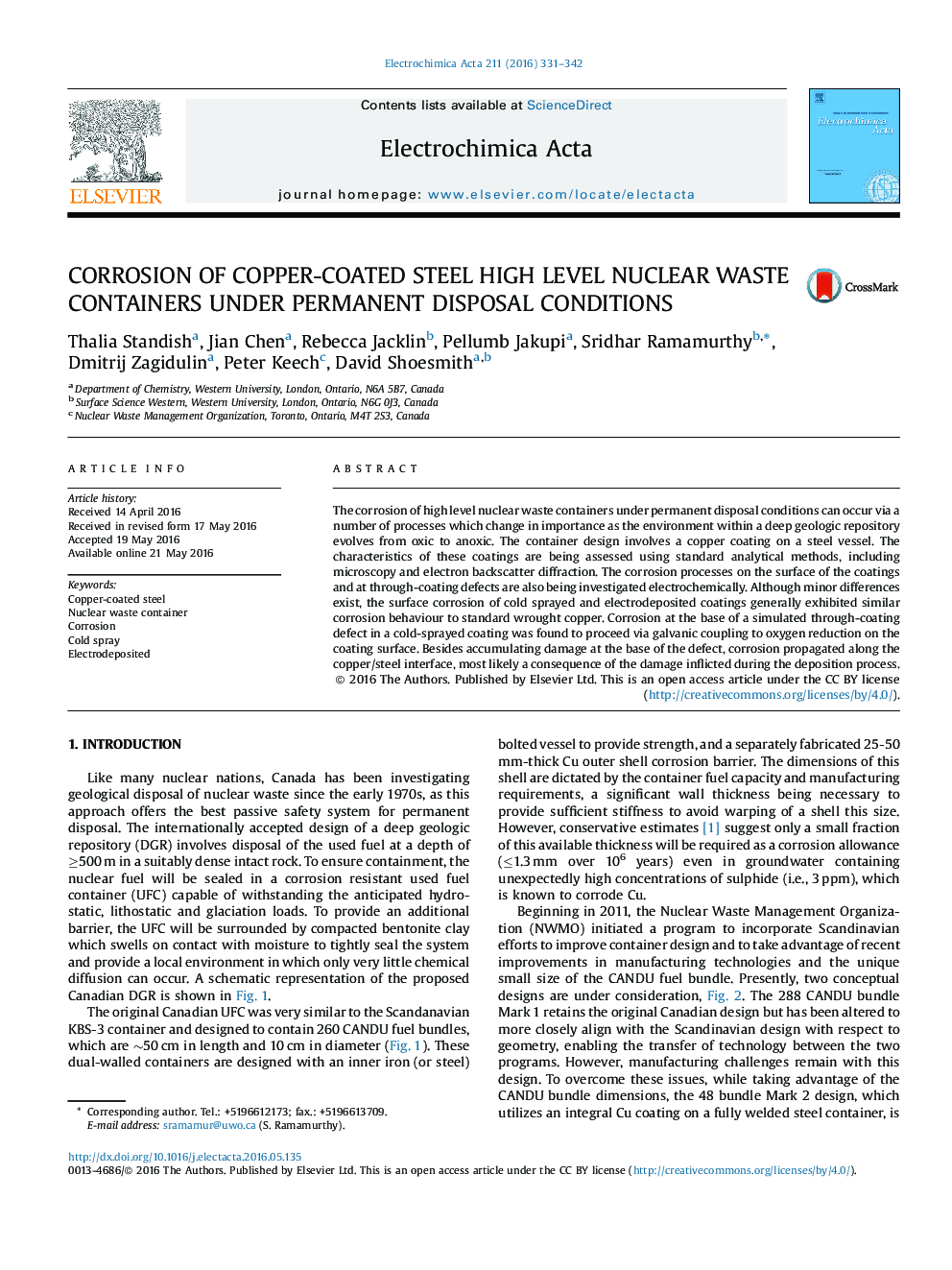| Article ID | Journal | Published Year | Pages | File Type |
|---|---|---|---|---|
| 6606271 | Electrochimica Acta | 2016 | 12 Pages |
Abstract
The corrosion of high level nuclear waste containers under permanent disposal conditions can occur via a number of processes which change in importance as the environment within a deep geologic repository evolves from oxic to anoxic. The container design involves a copper coating on a steel vessel. The characteristics of these coatings are being assessed using standard analytical methods, including microscopy and electron backscatter diffraction. The corrosion processes on the surface of the coatings and at through-coating defects are also being investigated electrochemically. Although minor differences exist, the surface corrosion of cold sprayed and electrodeposited coatings generally exhibited similar corrosion behaviour to standard wrought copper. Corrosion at the base of a simulated through-coating defect in a cold-sprayed coating was found to proceed via galvanic coupling to oxygen reduction on the coating surface. Besides accumulating damage at the base of the defect, corrosion propagated along the copper/steel interface, most likely a consequence of the damage inflicted during the deposition process.
Keywords
Related Topics
Physical Sciences and Engineering
Chemical Engineering
Chemical Engineering (General)
Authors
Thalia Standish, Jian Chen, Rebecca Jacklin, Pellumb Jakupi, Sridhar Ramamurthy, Dmitrij Zagidulin, Peter Keech, David Shoesmith,
